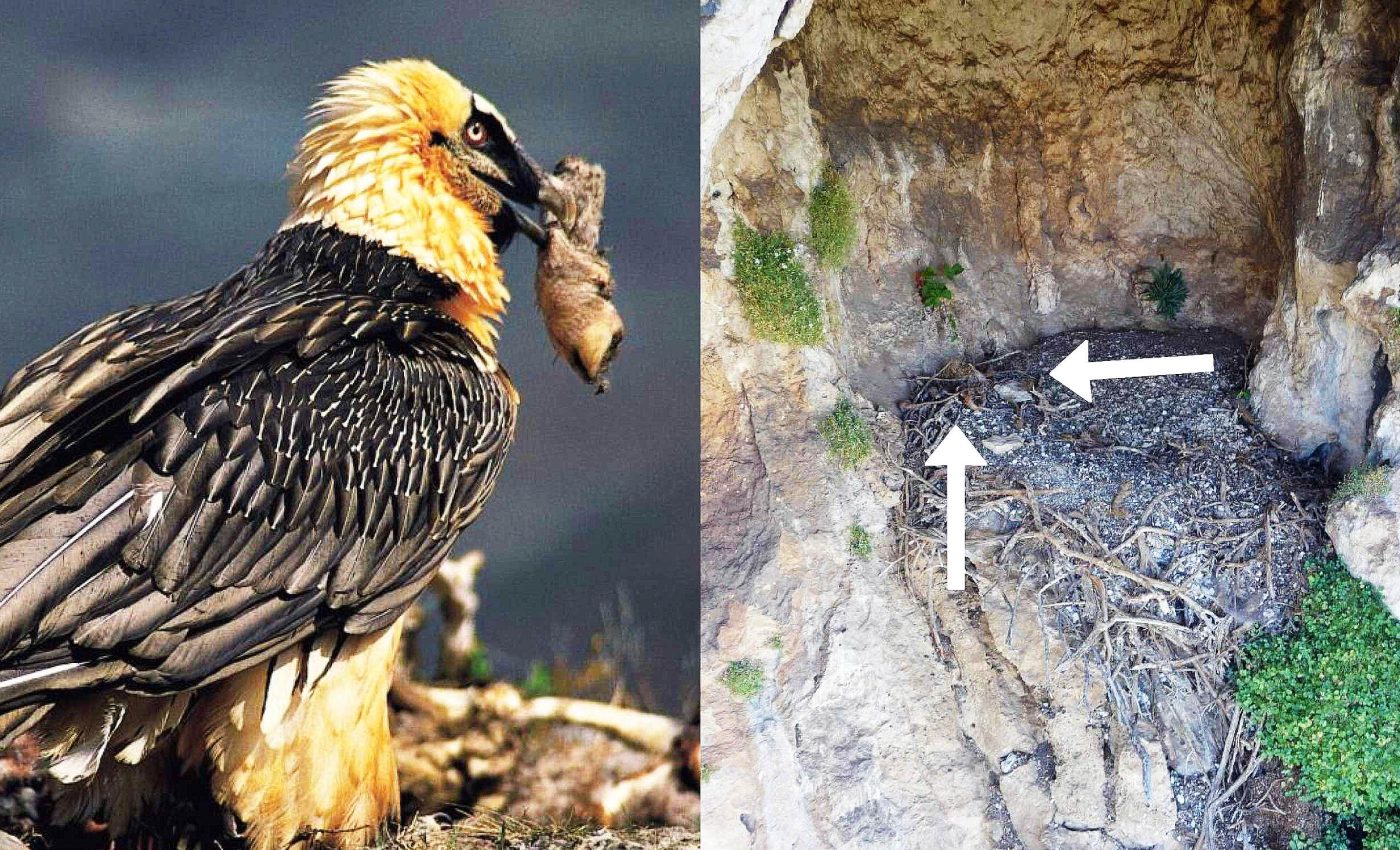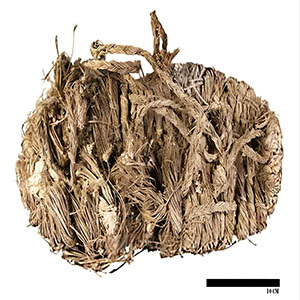
Medieval artifacts up to 750-years-old discovered in a bearded vulture's nest
A study describes how archaeologists exploring abandoned cliff nests in southern Spain pulled a medieval surprise from a bearded vulture’s home, a woven sandal that radiocarbon tests place between 650 and 750 years old.
Bearded vultures, Gypaetus barbatus, are unusual raptors because they specialize in osteophagy, a bone heavy diet, and they reuse protected cliff cavities as family sites for generations.
Bearded vulture nest hoard
Researchers rappelled into 12 long abandoned cavities in Andalusia and recovered 2,483 items from layered nest structures.
The tally included 2,117 bones, 43 eggshell fragments, 86 hooves, and 226 human made objects, which accounted for about nine percent of the total.
Among the human made pieces were 72 leather fragments, 129 pieces of fabric, and 25 objects woven from esparto grass, along with a crossbow bolt and a slingshot part.
The team treated each nest as a small excavation and recorded the sequence of layers using archaeological stratigraphy.
One nest yielded the standout sandal, and another layer in the same site produced a fragment of ochre painted sheep leather.
Radiocarbon results placed the shoe at roughly the late thirteenth century and the leather at the early fourteenth century.
The results confirm that bearded vulture nests can trap both natural and cultural material for centuries. They also show that nest reuse can span very long intervals without disturbance.
How a shoe survived seven centuries
Esparto, a tough Mediterranean grass still used in espadrilles and basketry, resists wear, but its survival depends on shelter from rot and insects.
The cliff cave offered a stable microclimate, cool and dry, and the nest itself packed in branches and wool that limited swings in humidity.
“The good conditions of the caves have allowed the artifacts to be preserved for centuries, suggesting that these nests are authentic natural museums,” said Antoni Margalida, lead author of the study.
That context helps clarify why delicate fibers, paint, and leather stayed intact.
The team dated selected pieces with radiocarbon analysis, which measures trace amounts of carbon 14 in organic material to estimate age. They also used protein fingerprinting to confirm that a painted hide came from sheep.

Why vultures collect human stuff
Bearded vultures build thick bowls from sticks and wool and often line them with soft material for insulation.
They carry most nest material in the beak, and when a nearby settlement discards textiles or cordage, a curious bird may pick them up.
The objects do not mean the birds raided archaeological sites or people, they are more like windfalls along travel routes.
Over many seasons the result is a layered record of local activity that includes both wildlife and people.
What nests reveal about ecosystems
These nests are ready-made archives for taphonomy, the study of how natural processes leave traces in bone, eggshell, and plant matter.
The bone mix sketches out what adults fed their chicks, while eggshells preserve the faint chemical record of the mother’s diet.
Stratified layers can show shifts in the kinds of grazers on the landscape and the timing of their remains in the diet. They can also flag changes in vegetation through the twigs and fibers woven into the bowl.
Where these birds stand today
The species has returned to parts of Spain through reintroduction efforts, yet small Mediterranean groups remain at risk.
A regional conservation workshop classified the Mediterranean bearded vulture as regionally Critically Endangered and estimated fewer than 250 mature individuals.
That picture explains why researchers want every new source of ecological history they can find. Old nests offer timelines that can guide site protection and future releases.
Bearded vulture nests across centuries
Long term nest reuse is not unique to bearded vultures. In Greenland, scientists have dated gyrfalcon nesting material and droppings to nearly 2,800 years ago, showing that some raptors may return to the same cliffs for millennia.
A similar pattern was found in North America, where researchers documented a golden eagle nest that had been continuously expanded over centuries until it reached about 23 feet tall.
These towering accumulations reveal how generations of birds can turn a single site into a layered record of ecological and environmental change.
The Spanish team plans to identify every item they collected and to date layers within nests to tie materials to specific periods.
That approach would let scientists match nest finds to known shifts in land use, wildfire, and herd management.
It would also open the door to careful chemical tests on eggshells to track contaminants through time. If managers can see when risks climbed or fell, they gain a clearer map for recovery plans.
The study is published in Ecology.
—–
Like what you read? Subscribe to our newsletter for engaging articles, exclusive content, and the latest updates.
Check us out on EarthSnap, a free app brought to you by Eric Ralls and Earth.com.
—–













